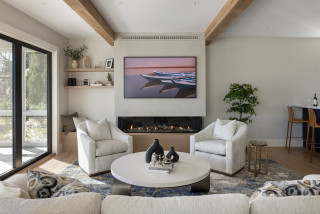
This article was originally published by a www.houzz.com . Read the Original article here. .

This article was originally published by a www.houzz.com . Read the Original article here. .

“We are frequently considering how things will work in 20 years’ time and all that’s in between,” says designer Steve Root of Roots Kitchens, Bedrooms and Bathrooms. “That means thinking about how the homeowners’ needs might change, how lifestyles may develop, how things will wear and break and, thus, how they can be maintained.”
But that doesn’t means a kitchen without character. Because when form and function work hand in hand, you’re winning at design.
This article was originally published by a www.houzz.com . Read the Original article here. .

“We are frequently considering how things will work in 20 years’ time and all that’s in between,” says designer Steve Root of Roots Kitchens, Bedrooms and Bathrooms. “That means thinking about how the homeowners’ needs might change, how lifestyles may develop, how things will wear and break and, thus, how they can be maintained.”
But that doesn’t means a kitchen without character. Because when form and function work hand in hand, you’re winning at design.
This article was originally published by a www.houzz.com . Read the Original article here. .

By rearranging the location of the main components, they were able to create a roomier walk-in shower, a larger vanity that significantly improves storage and an open toilet area, leaving plenty of floor and elbow room. A layered lighting scheme results in a well-lit space and highlights the warm contemporary style that combines various off-white tiles, matte black fixtures and a natural knotty alder vanity cabinet with concrete-look countertop.
This article was originally published by a www.houzz.com . Read the Original article here. .
Seating is the heart of any living room and is an area to really focus on. “Higher and firmer seats and armrests really make a difference,” Mullally says.
Becky Storey of Storey Interiors highlights the importance of seating that’s easy to get in and out of, especially for those with mobility difficulties. Seating that’s too low can be problematic, she says. “Or seating that slopes down at the back, because it requires a lot more upper body strength to pull yourself up. The same goes for sofas that have really soft cushions or where the seat is very deep.”
For a lesser change than buying new chairs and sofas, Eva Byrne of houseology suggests that a standard seat height of 18 inches should accommodate yourself and all visitors, and “a raised cushion at your favorite spot will improve accessibility here if needed.”
Vatzeva also highlights the importance of good support for the back to keep it straight, along, potentially, with support for the feet to be lifted. But she also has a word of caution about electric recliners. “Personally, I don’t think they are in our favor,” she says. “They promote less movement and less activity … which can have a negative impact on body, mind and general health.”
It’s not all about sofas and armchairs — consider custom solutions too. Vatzeva suggests that a great spot for adding new seating is within a bay window or alcove. “These are good places to install seating at a suitable height,” she says. “They can be standalone pieces or built-in, and offer a wonderful way of combining the practical with the beautiful while being bespoke for one’s own needs.”
Shop for living room furniture